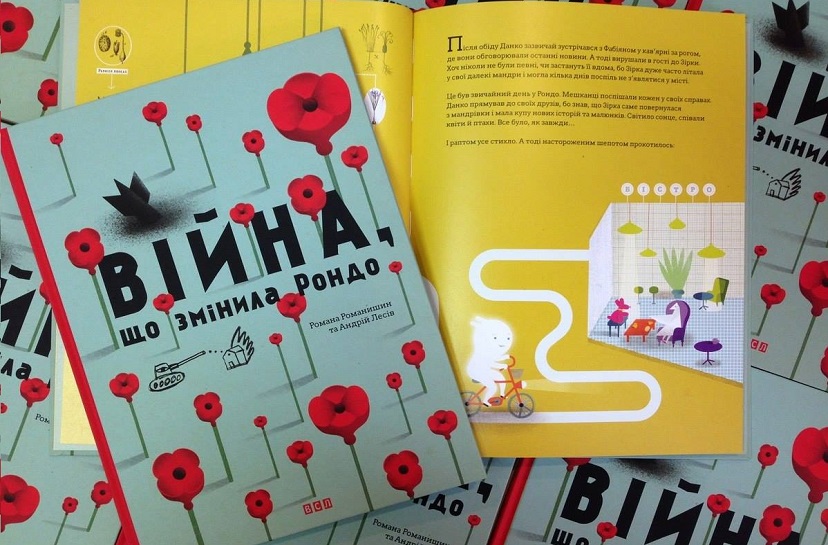* ESC - close the search window
LGBT
There is a book for everyone: exploring literature choices in diverse families
04.06.2024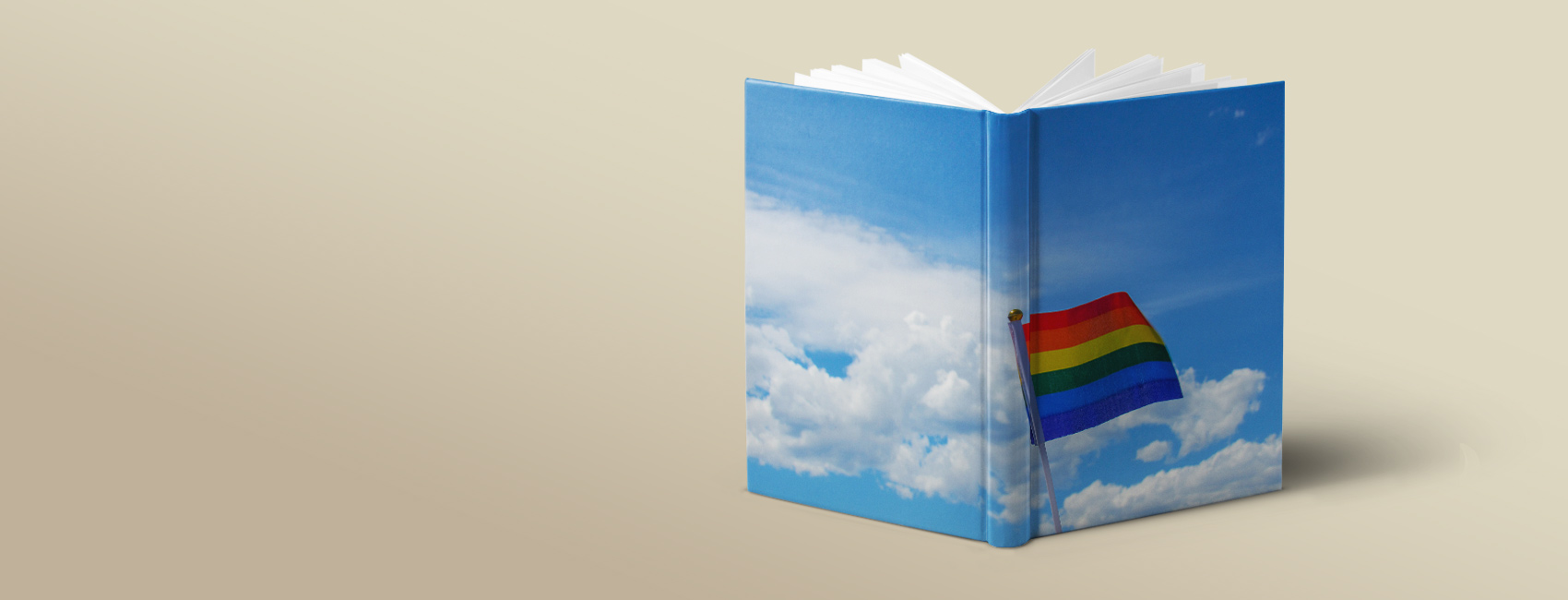
A Ukrainian family traditionally looks like this: mom, dad, child, or children. Why is this configuration considered “traditional”? Because it is the format defined by our traditional social norms, beliefs, folklore, and rituals. However, the world is diverse, and many families do not quite fit what is considered a “traditional” family. Not all of them agree to be called “non-traditional” because they have their traditions.
We asked people from different families to describe their experiences of being different from usual family structures. They told us the challenges they face and what books they use to discuss them with their children.
Mom, kids, dad in a dress
Eliash Strongowski, Ukraine-Poland, co-founder of Vydavnytstvo Publishing House
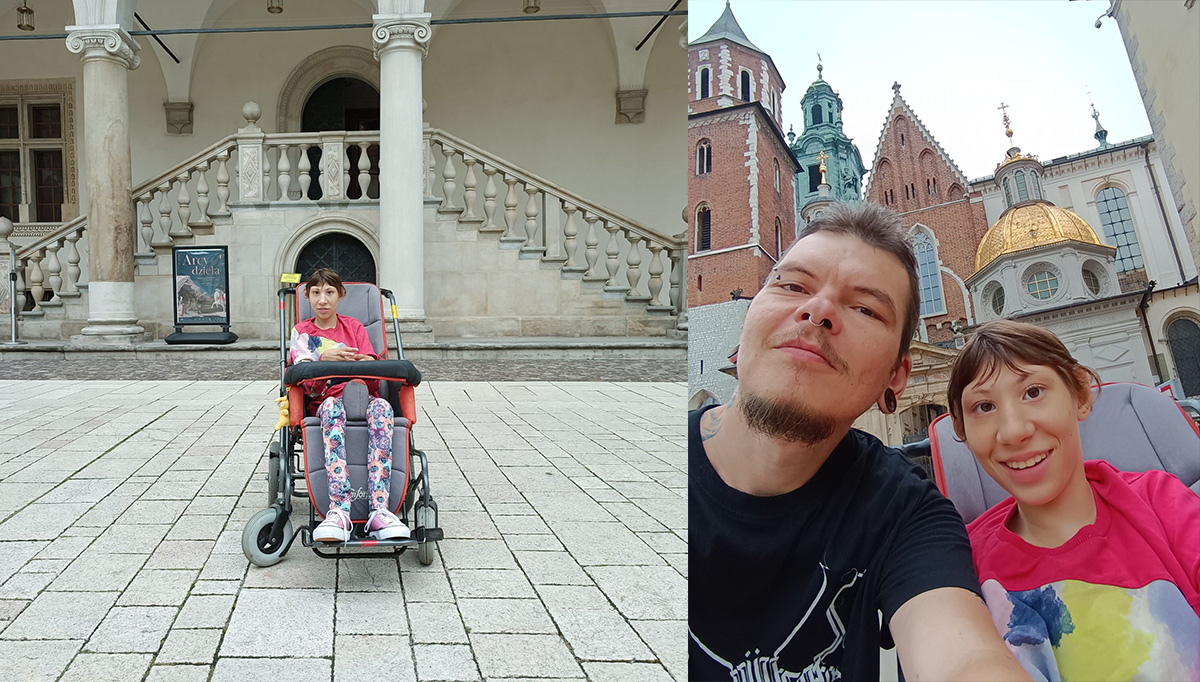
We have a non-standard family because it is complete: mom, dad, and children. Legally or factually, the standard family is recognized as the most common in society. Unfortunately, statistically speaking, single-parent families make up the majority of the population in our country. I don’t quite understand this stereotyping — standard vs. non-standard, traditional vs. non-traditional. In reality, there is either a loving family or a non-loving one.
We are a family with two children, and the older of these children has microcephaly. Eva is 15 and a half years old, and she has the mental development of a 9-month-old child. Accordingly, she needs full-time, around-the-clock care. She is the determining factor and pivot around which our family revolves.
We also have a son, Zbyszek, who is now three. He is completely healthy, and this is an entirely different story. We go with him to Eva’s rehabilitation sessions; he sees other children with disabilities and perceives them as an absolute given, as part of the world he lives in.
The most common reaction to our family is amazement. We have been in Poland for a year and a half now. During this year and a half, we have had time to compare Polish and Ukrainian societies. Polish society is much more inclusive and attentive to children with disabilities. Children in Poland are also open to Eva.

The Ukrainian experience is entirely different. In Ukraine, parents always pulled their children away from Eva on playgrounds: “Don’t come near, don’t touch.” They shouted at their child: “What are you doing? Where are you going?” We had cases of extreme rejection when we arrived at a playground, and people would confront me, questioning why I brought my daughter there.
When Lilia Omelianenko and I founded “Vydavnytstvo” seven years ago, we announced that we would focus on social issues. We wanted to address topics other publishers wouldn’t. We published the comic book “Noel” (by Michael Ross, “Vydavnytstvo”). It is a fictional story about an authentic German village where people with different types of disabilities live together.
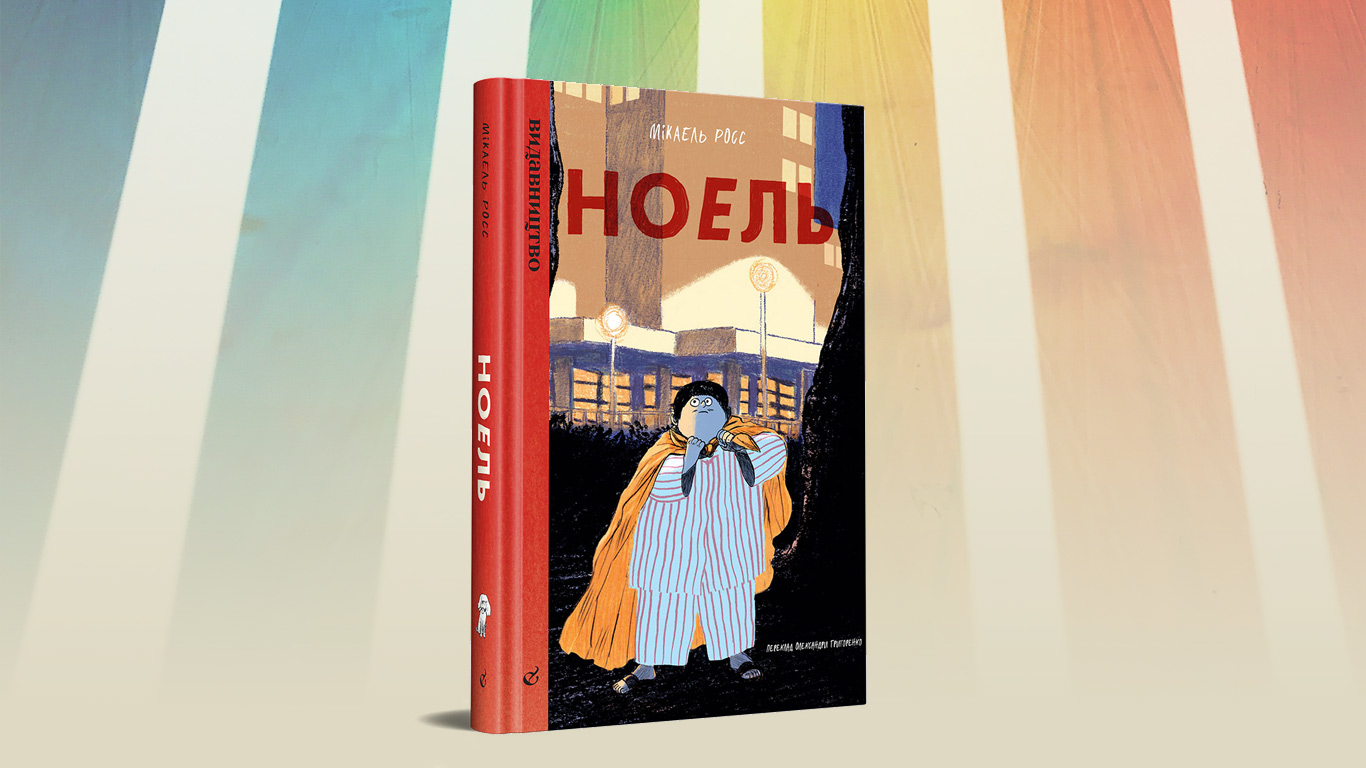
“Noel” by Michael Ross (Ukrainian book cover)
There are beautiful books about acceptance for three-year-olds. One such Swedish picture book, a super hit there, is “Only Butts” (“Bara Rumpor” by Annika Leone & Bettina Johansson). In Sweden, there is a tradition of public baths where whole families come to bathe. Since Sweden is now a multicultural society, a child goes with their mother to such a bathhouse and sees that people can be of very different colors and shapes. They have different genitals, may or may not have bellies, and can be hairy or bald, with all shades of skin color. It fascinates the book’s heroine, who asks many questions, which her mother patiently answers.
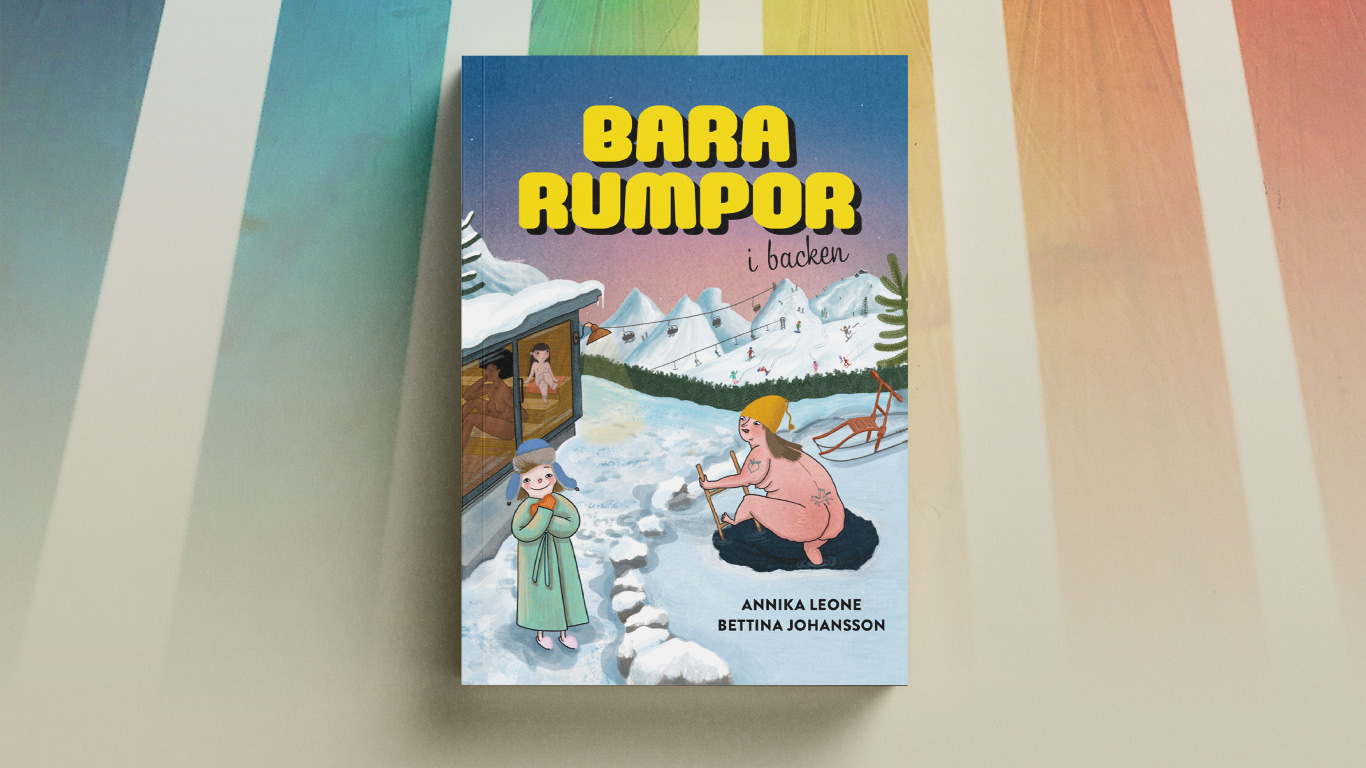
I have a recent story about wearing a dress. (Eliash went to Pride in a dress, which caused a wave of outrage on social media from some bloggers.) I do not hide that I love wearing dresses and skirts, and I do not believe this is exclusively for women. Men wear dress-like clothes worldwide, and it’s normalized; no one even raises an eyebrow.
RELATED: Hungary fines bookstores for selling LGBT comic book “Heartstopper”
There is an excellent book on this topic that I would love to see in Ukraine: “The Prince and the Dressmaker” by Jen Wang. It is a story about a prince who loves to wear dresses, but the problem is that he is a boy, and boys don’t wear dresses.

Accordingly, he needed a tailor to make a dress for the prince. One of the phrases in this book fascinated me: “It turned out that some dresses have to wait for their prince.”
Mommy, mom, two kids
Katya and Natasha, Ukraine-Netherlands
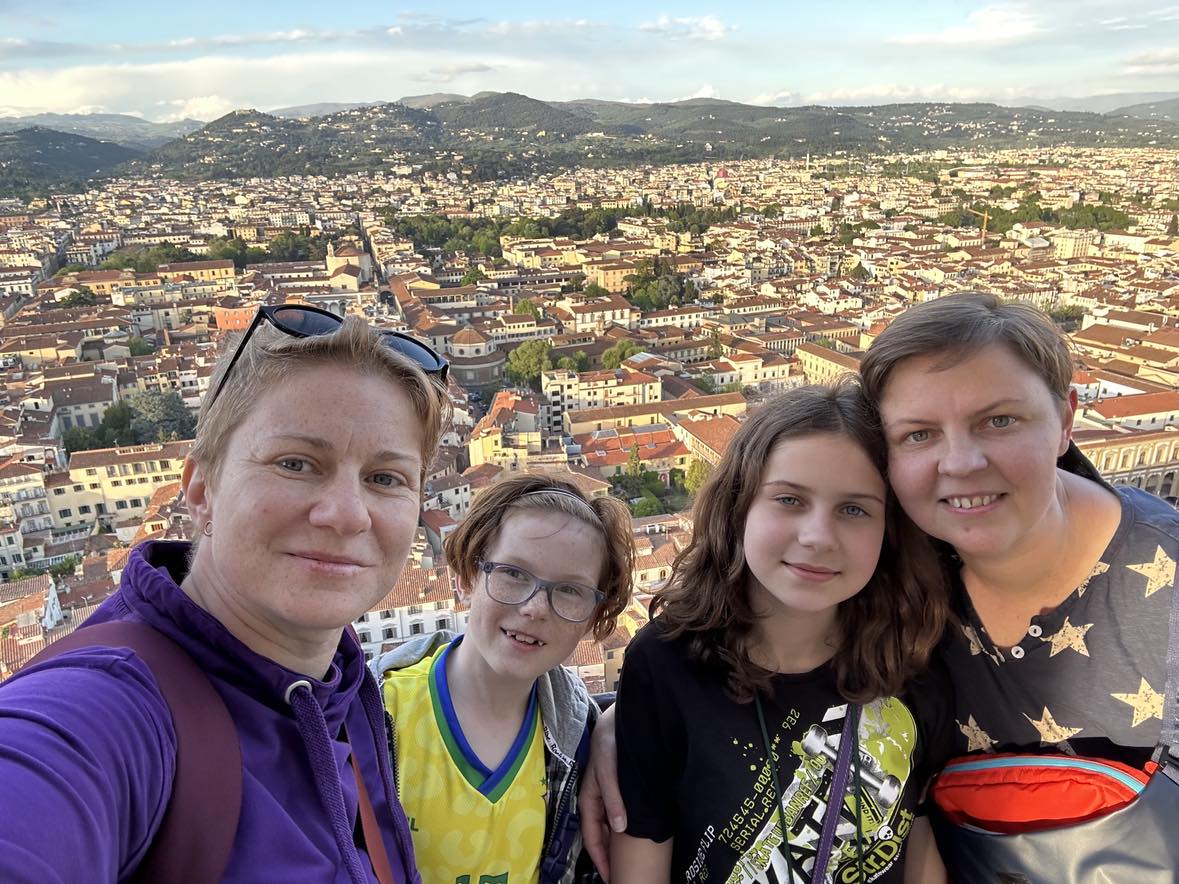
We are a traditional family — we have our own traditions. We are Katya and Natasha, and we have been living in the Netherlands for almost four years. We’ve been together for a long time and have had children together. We have two children, a boy and a girl. The boy is nine and a half, and the girl is eleven. Our children do not have a father, but they have two mothers.
In Ukraine, we had only one instance when a teacher said that Varya shouldn’t call me mom because she has another mom. I replied that we would figure out with the child who her mother was. Then Nikita went to the same teachers, and after that, there were no more questions.
Every December in the Netherlands, schools have a day called Purple Friday. Students can come to school wearing purple clothes in support of LGBTQ+ children who study with them or if they identify as such. The students initiate Purple Friday — they can request information materials, school decorations, and posters to decorate the school. They also self-organize events for that day.
We moved to the Netherlands for work but stayed to find acceptance and understanding. Here, we have never had any questions about being a family with two mothers. We live not far from Amsterdam. A standard family typically has two or three children, a cat, a dog, and parents. Many couples are divorced with children spending half the time with one parent and half with the other. Children do not just visit their fathers; they live for two weeks with their mother and two weeks with their father.
During family conversations, we talk to our children about our family’s uniqueness. We have a book called “Maya and Her Moms” (Larysa Denysenko, “Vydavnytstvo”). We bought it as soon as it came out. Varya was surprised that the book was about a family just like ours. She read it in the book, so it must be something normal.
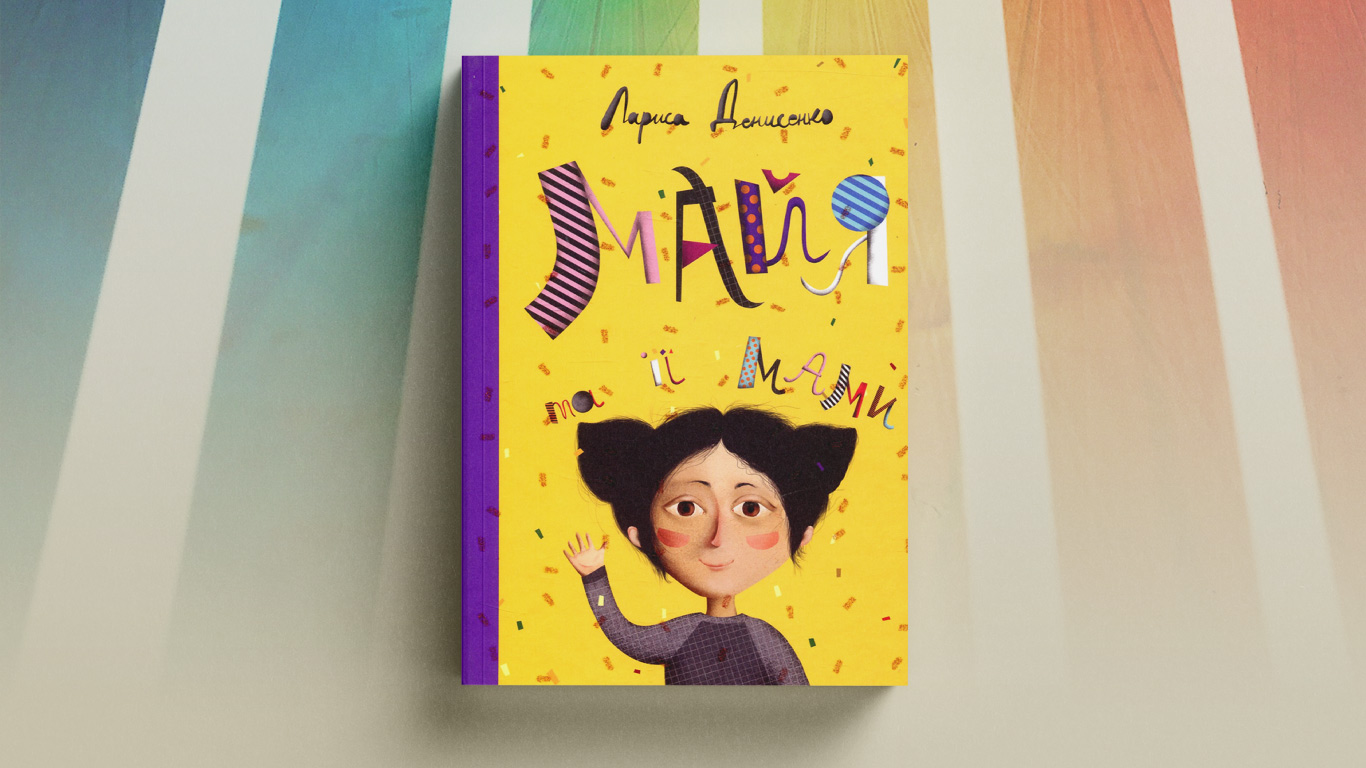
“Maya and Her Moms” by Larysa Denysenko (Ukrainian book cover)
We also have “Bedtime Stories for Rebel Girls” by Francesca Cavallo, published by Knygolove. We bought it to have examples and stories of different successful women. My son used to read us these tales of rebels. He couldn’t read yet, and Varya would read to him at night because she liked to read aloud. He enjoyed all these stories and discovered that girls are strong, innovative, and successful.
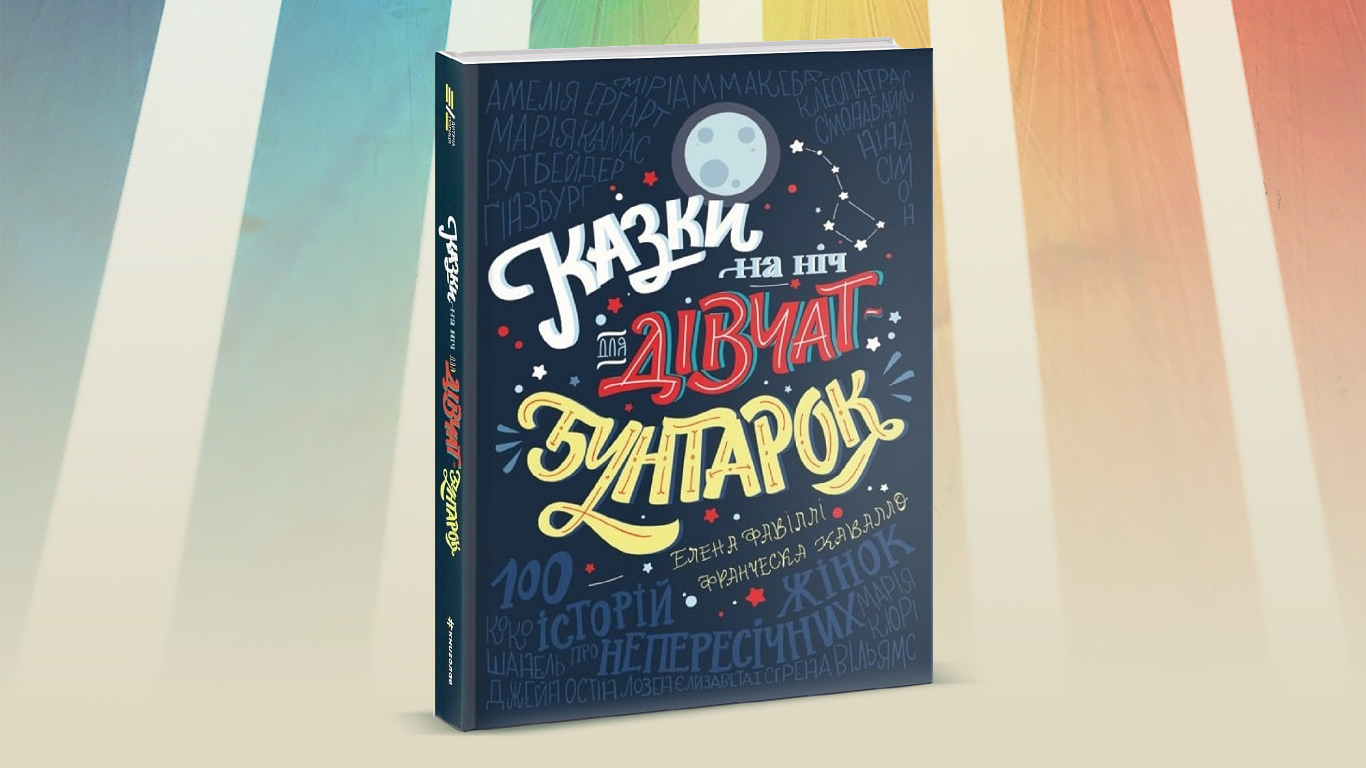
“Bedtime Stories for Rebel Girls” by Francesca Cavallo (Ukrainian book cover)
Our goal was to get them interested in reading. They are now interested in the kind of books we buy them — contemporary literature, new authors, and new books. They also have reading lessons at school, where they take a book either from the classroom library or the school library. During this lesson, they can sit on a desk, on the floor, with their feet on a chair, on a table, curled up as they want — this is their reading time.
Dad, father, and baby
Paul O’Connor, Ukraine-USA
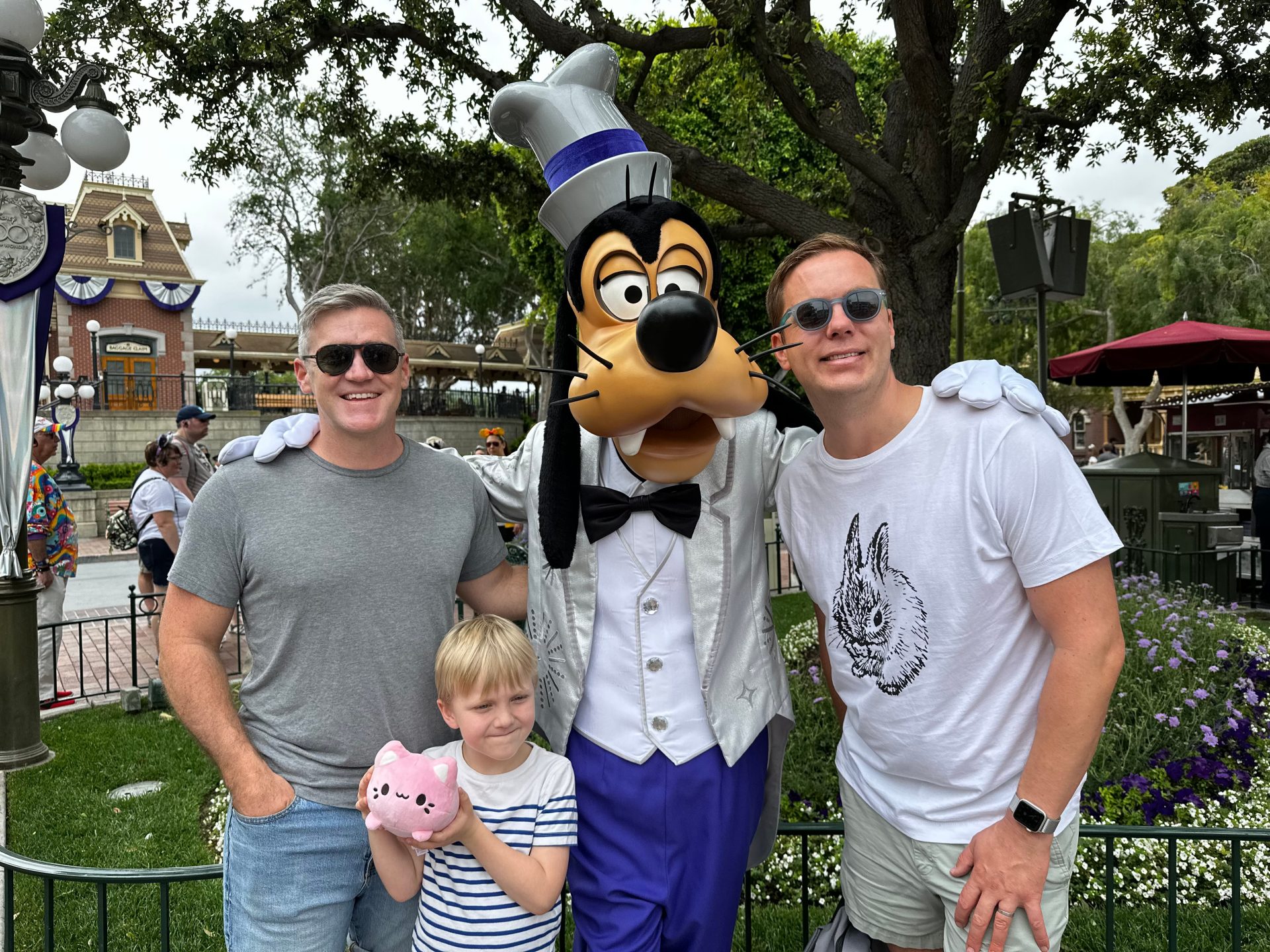
My husband and I have a son who is five and a half years old. My husband is an American. At first, I wanted to pass on a Ukrainian identity to my son, at least with the language. However, I realized that more than one person is needed for a language. My son is growing up in an American environment, and when his first language manifestations appear, they are in English. But we talk to our son about different languages and travel a lot with him. I want to support what interests him, not impose Ukrainian culture automatically.
We talk about Ukrainian culture and the war. I was lucky that I did not face much rejection from our same-sex family. However, I have also always lived in large, progressive cities. I’ve lived in Washington, New York, and now Los Angeles. The school fully supports us and values diversity. There are plenty of diverse families; although we are the only gay couple in this kindergarten, there are many interracial couples, so diversity is expected.
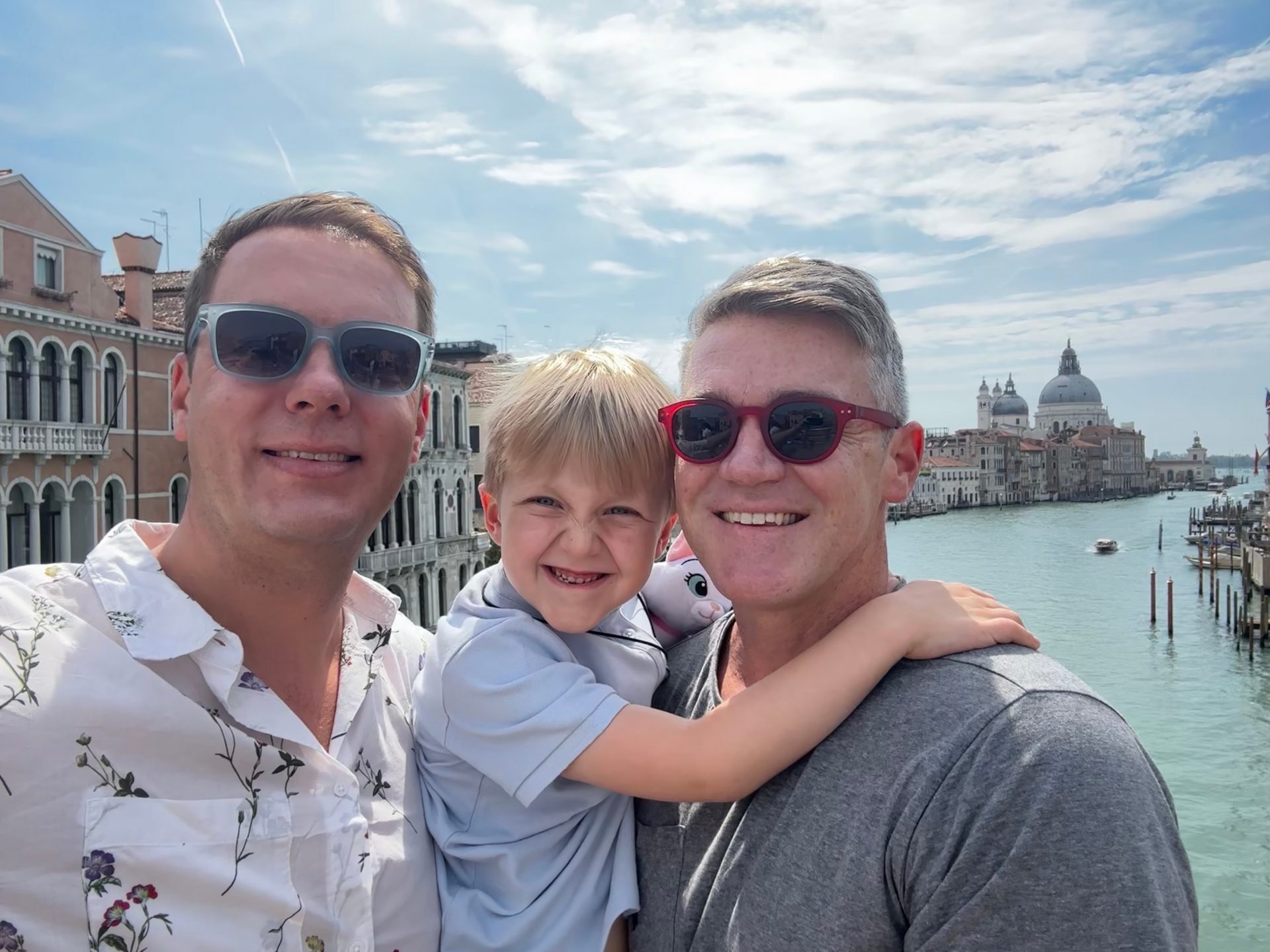
There’s a cool thing here: they organize groups for new parents in the kindergarten, and we went to one. A very cool lady there has been doing this for 30 years. She works with families all the time, and we all come together. This woman normalized various situations. It was a constant conversation that “Bobby has two moms.” Our son has a circle of friends with children who have two fathers or two mothers.
RELATED: The Yellow Butterfly: Three stories of a silent book from Ukraine
Now he’s five, and we also talk to him a little about his surrogate mother. We try very hard to avoid any tension around this issue. If he asks questions, we try to answer them straightforwardly.
We did not have a specific process for selecting books. People donated many thematic books. Of course, we looked for books in the library, such as “Daddy, Papa, and Me” by Lesléa Newman.
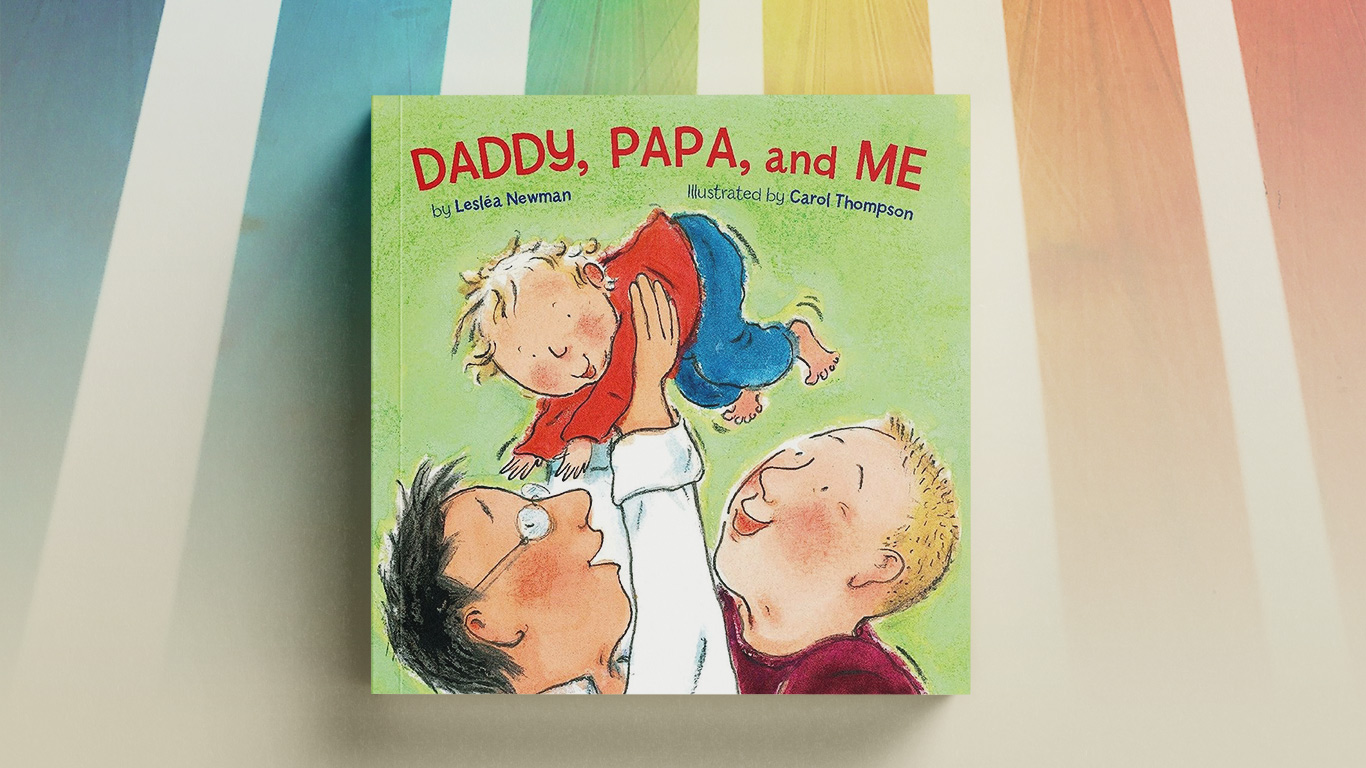
They have a Drag Queen Story Hour in Los Angeles where Drag Queens read books. That’s how we learned about the book “Feminist Baby”: “Feminist Baby likes pink and blue. Sometimes she’ll throw up on you.” From that Drag Queen Story Hour, we got a hilarious book, “The Hips on the Drag Queen Go Swish, Swish, Swish” (Lil Miss Hot Mess, Olga de Dios Ruiz): “The hair of the drag queen goes up, up, up.” Well, that’s fun!
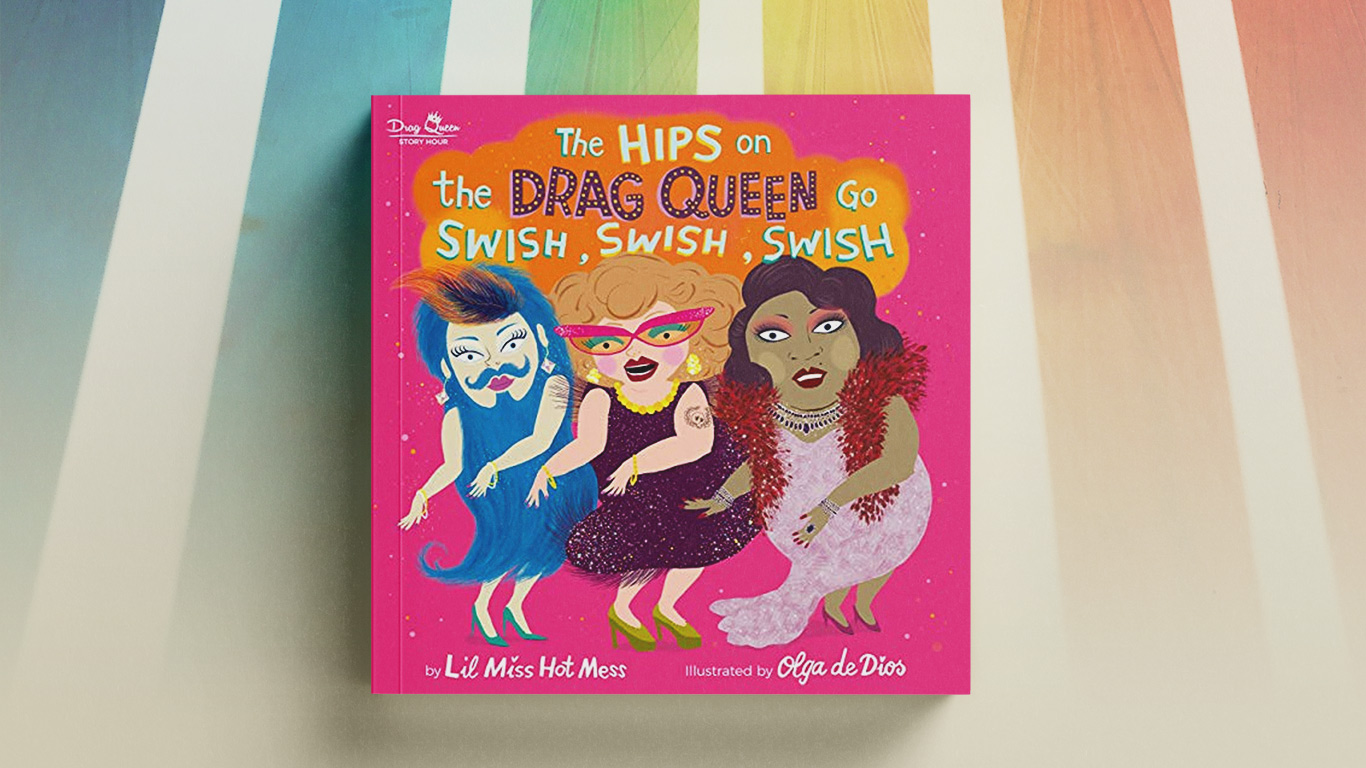
On racism, we have “Antiracist Baby” by Ibram X. Kendi and Ashley Lukashevsky. We discuss different skin colors and how to understand people who don’t look like you.
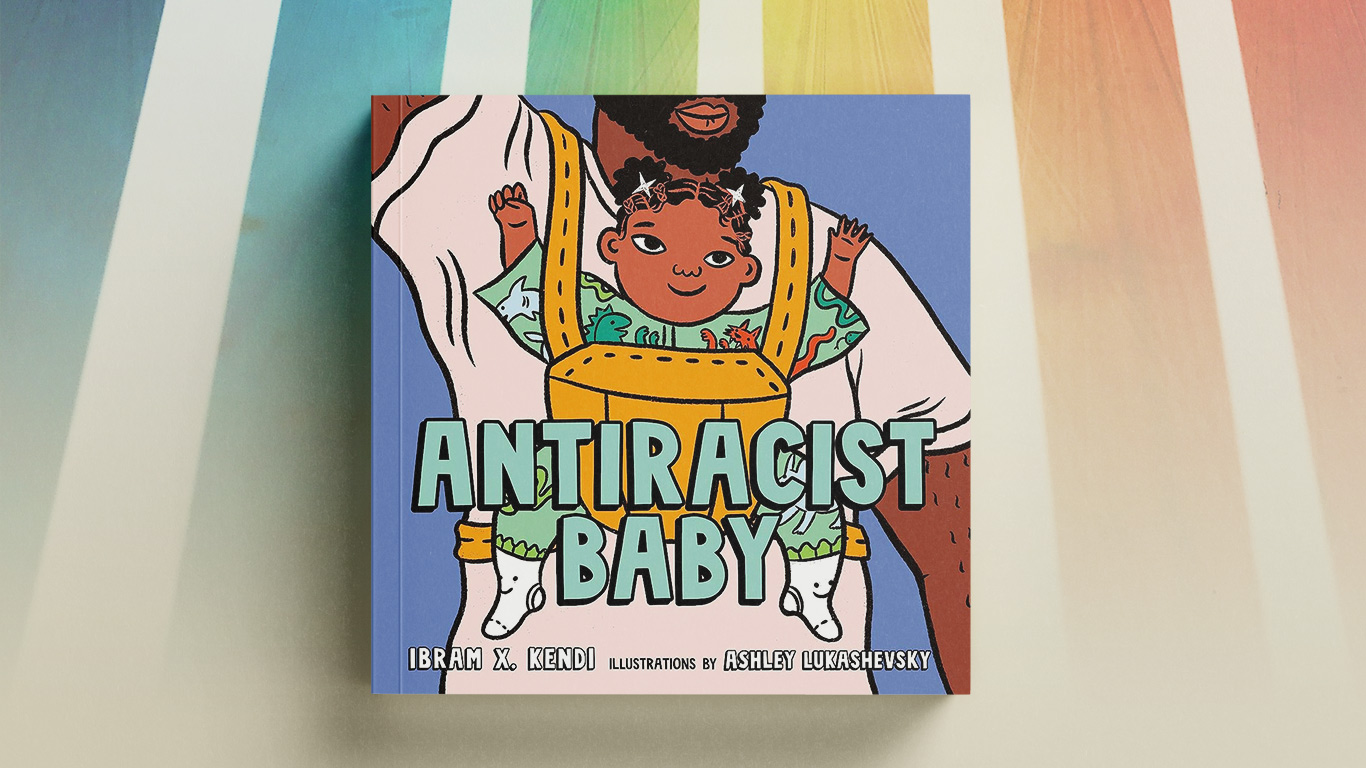
The books we read show families with different parental configurations and skin colors. We choose them so that not everything is white and heterosexual. With these books, a child realizes: I am not alone; this exists in the world! Having such representation and reflection of one’s experience in books, cartoons, conversations, and the circle of people around you is essential.
Our son, for example, has been wanting to wear dresses lately. He liked the ones with butterflies and went to school several times in them. There was one teacher who said that only girls wear dresses. But again, this is an opportunity to discuss whether this is the case. My son and I watch various fashion shows and see that some men wear dresses.
The problem is not that questions arise. The problem is how adults respond to these questions. Yes, you usually see a lot of girls wearing dresses. But men can wear dresses too. Why not?
A family with a solo mom, a bunch of adults, and everyone looks weird
Lyuba Malikova, Ukraine-Germany, artist at Dis/order
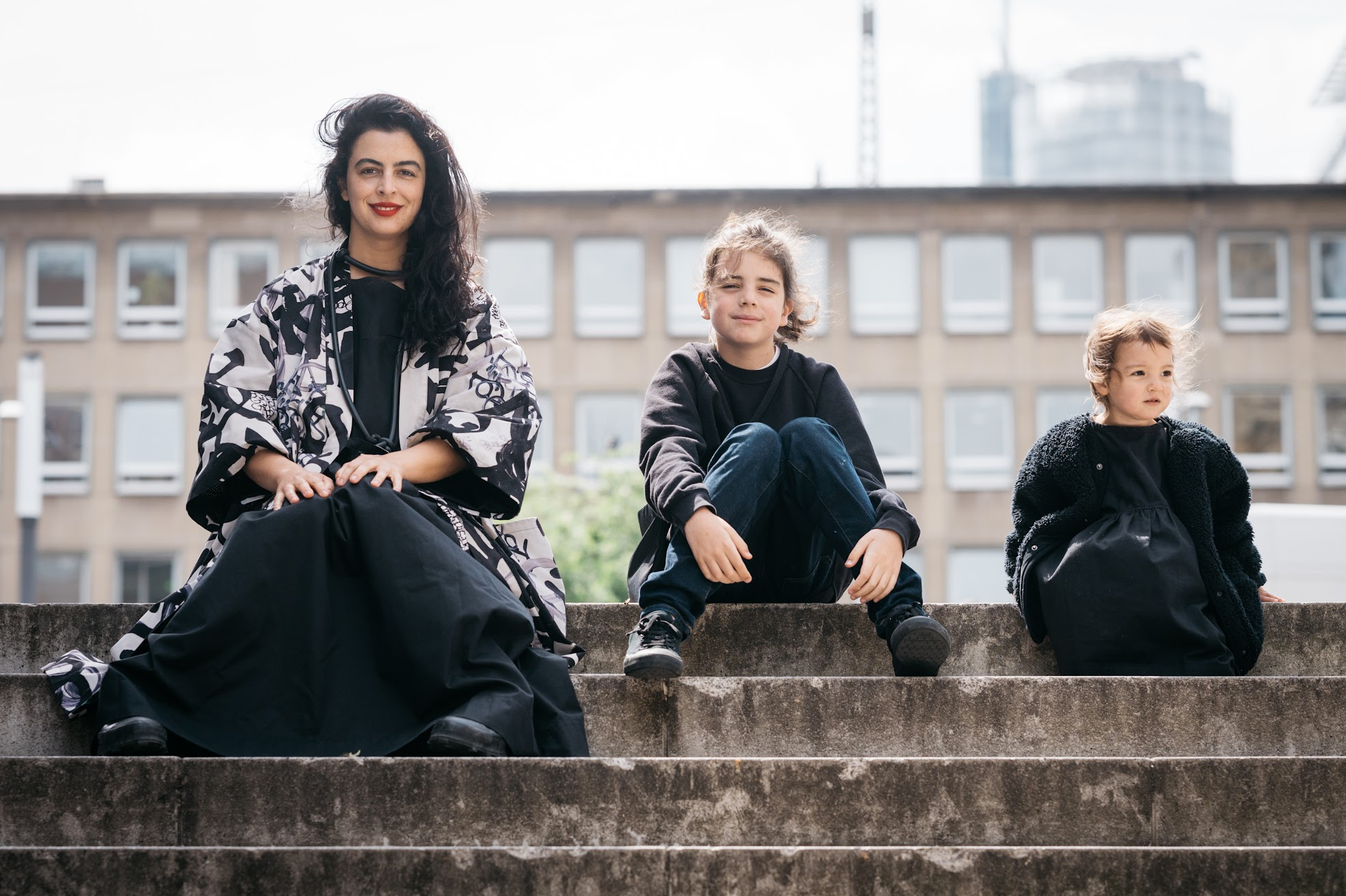
A traditional family might be people who live together, are heterosexual, and raise children, right? However, I know there’s another “standard” model of a traditional family: divorced parents who do not maintain a good relationship. One of the parents (usually the father in our culture) ceases to be present at all or is present in some very unhealthy, non-ecological forms for the family.
Our family looks strange in this regard. I’ve been living alone with my two children for a long time, and many people know about it, but in Kyiv, we could often be seen together in a big circle — me, the kids, Max (my eldest child’s biological father), and other people with us. We have a great relationship; we practice co-creation, work together, and communicate on family issues and other topics. We are a family, but we are just a strange one.
When one of us has other partners and a stable relationship, our company expands with them.
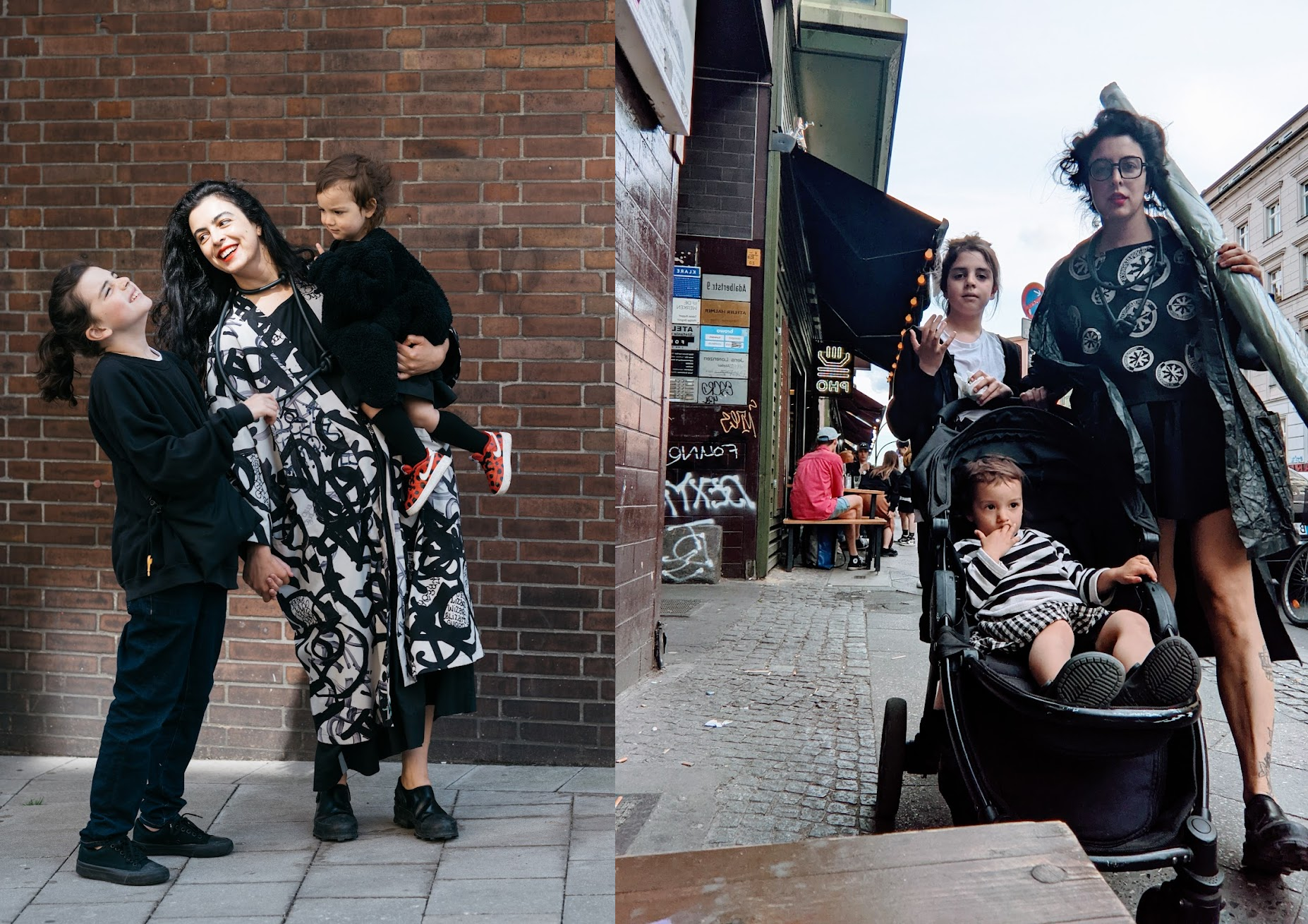
Sometimes, people are surprised by the number of people present; they must be clear about who is who. We’ve had some rather unpleasant conflicts with others on this topic. I don’t define it in any particular way myself. I could say: oh, we’re a polyamorous family! But I don’t say that because it’s just another label. Our style and how we look make people laugh, and I like to make people laugh. I wear 70 or 80 percent of my wardrobe from my Dis/order brand.
Most of all, Yakov faces misgendering. Despite being a pretty “boyish” guy, he is misgendered every day and believed to be a girl because he has long, sometimes even dyed hair. And even though he dresses quite boyishly, I’m very surprised that he hasn’t cut his hair over the years. Yakov likes how he dresses; he is happy that he looks interesting.
RELATED: Six Ukrainian illustrators longlisted for the World Illustration Awards 2024
The changed social and family landscape is so typical for us. I don’t have to explain to my children that someone has two moms. They do, and thank God for that. It’s normal; it’s not a problem.
Our favorite books are “The Moomintrolls” (a series by Tove Jansson). This series is a super hit for us despite the fact that there is a family structure there: there is a dad and a mom, everyone lives in the same house, and there are also a lot of people who come there. Maybe that’s the point?
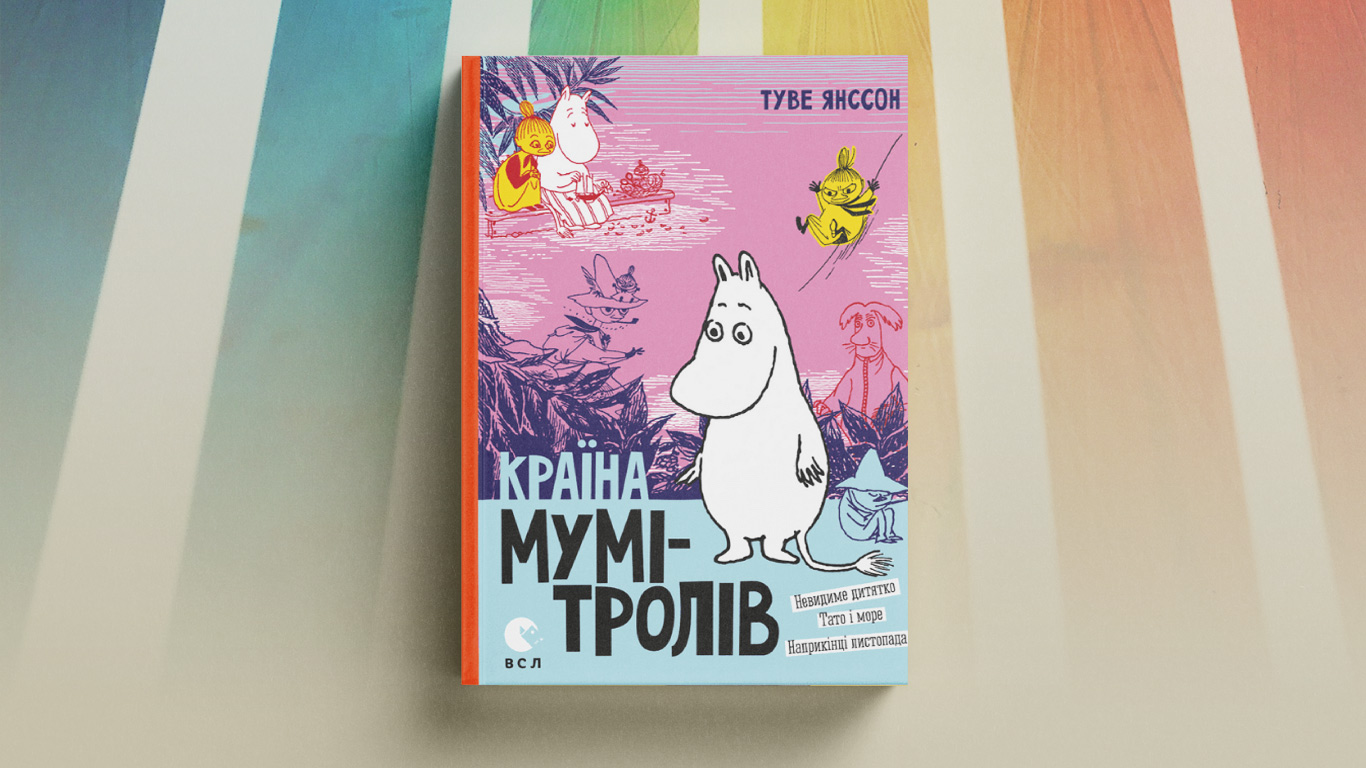
“The Moomintrolls” by Tove Jansson (Ukrainian book cover)
Also, the biggest superhit for both children is “Who Will Make the Snow?” by Taras and Marjana Prokhasko (The Old Lion Publishing House). It’s the number one children’s book I’ve seen in many years.
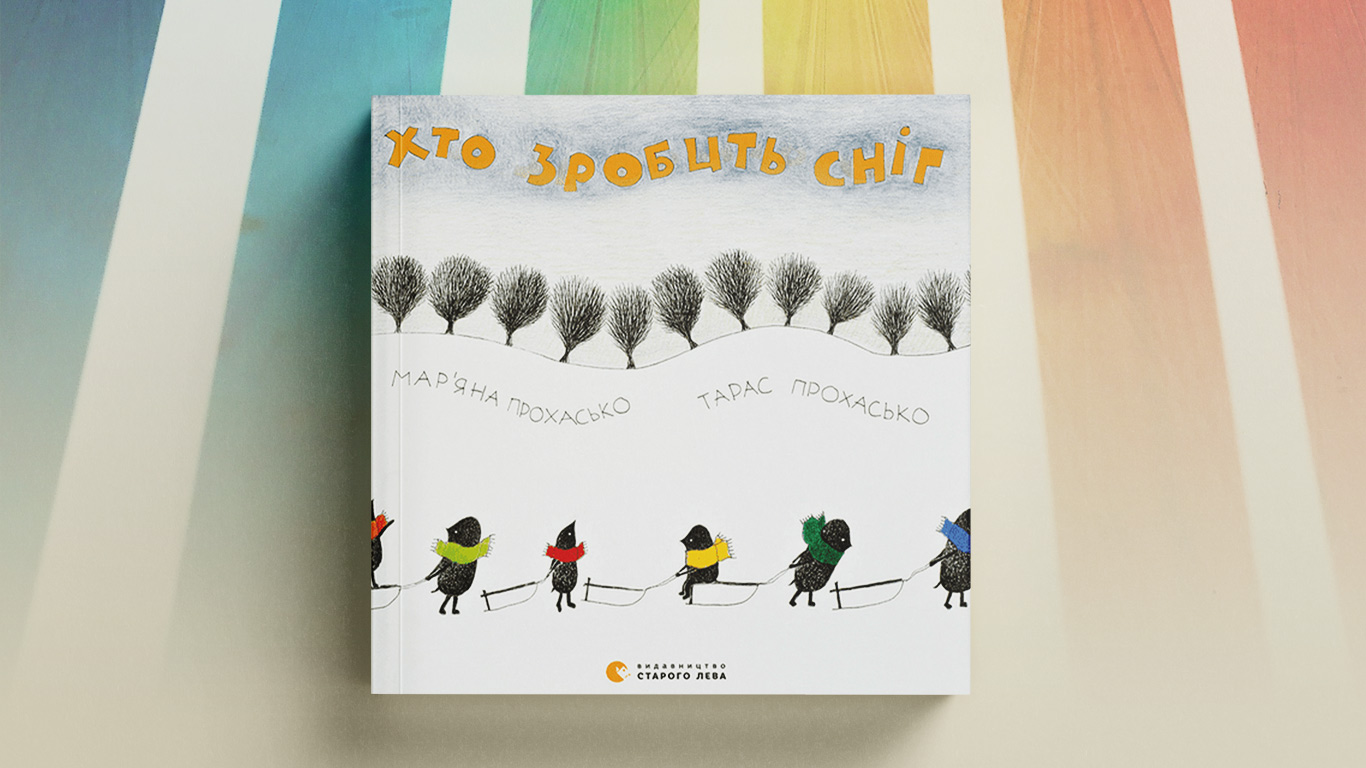
“Who Will Make the Snow?” by Taras and Marjana Prokhasko (Ukrainian book cover)
The books that have already appeared in our family for our daughter Malyuchka are first about Gruffalo and Gruffalo’s Child by Julia Donaldson and illustrated by Axel Scheffler, and then all of these authors in tandem. Each of their books is simply gorgeous.
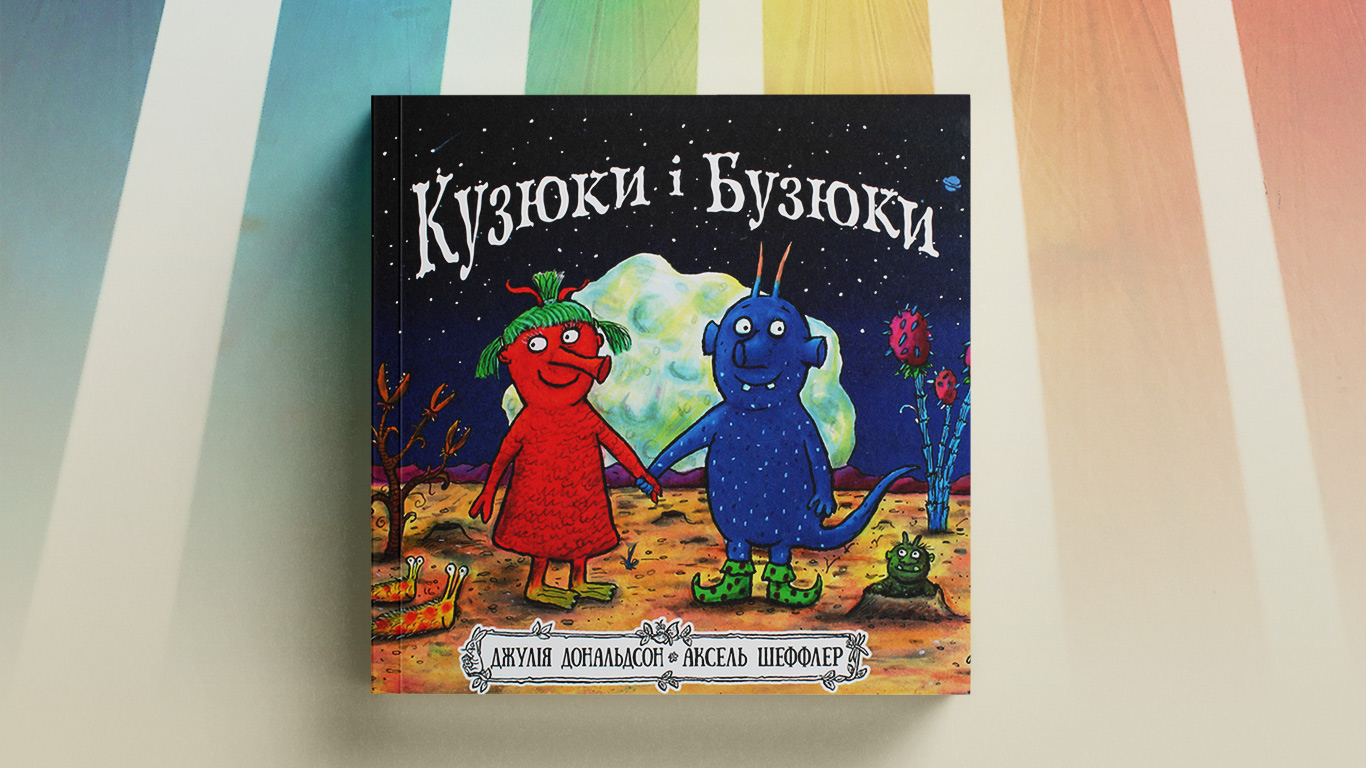
“Gruffalo and Gruffalo’s Child” by Julia Donaldson and illustrated by Axel Scheffler (Ukrainian book cover)
There’s also a favorite story about Daddy Chicken, the book “Ugly Five” (Julia Donaldson and Axel Scheffler, Chytarium publisher), or a series of mouse books by another author, “Blackberry Hedge” series (Jill Barklem, Chytarium publisher) — all completely family-friendly.
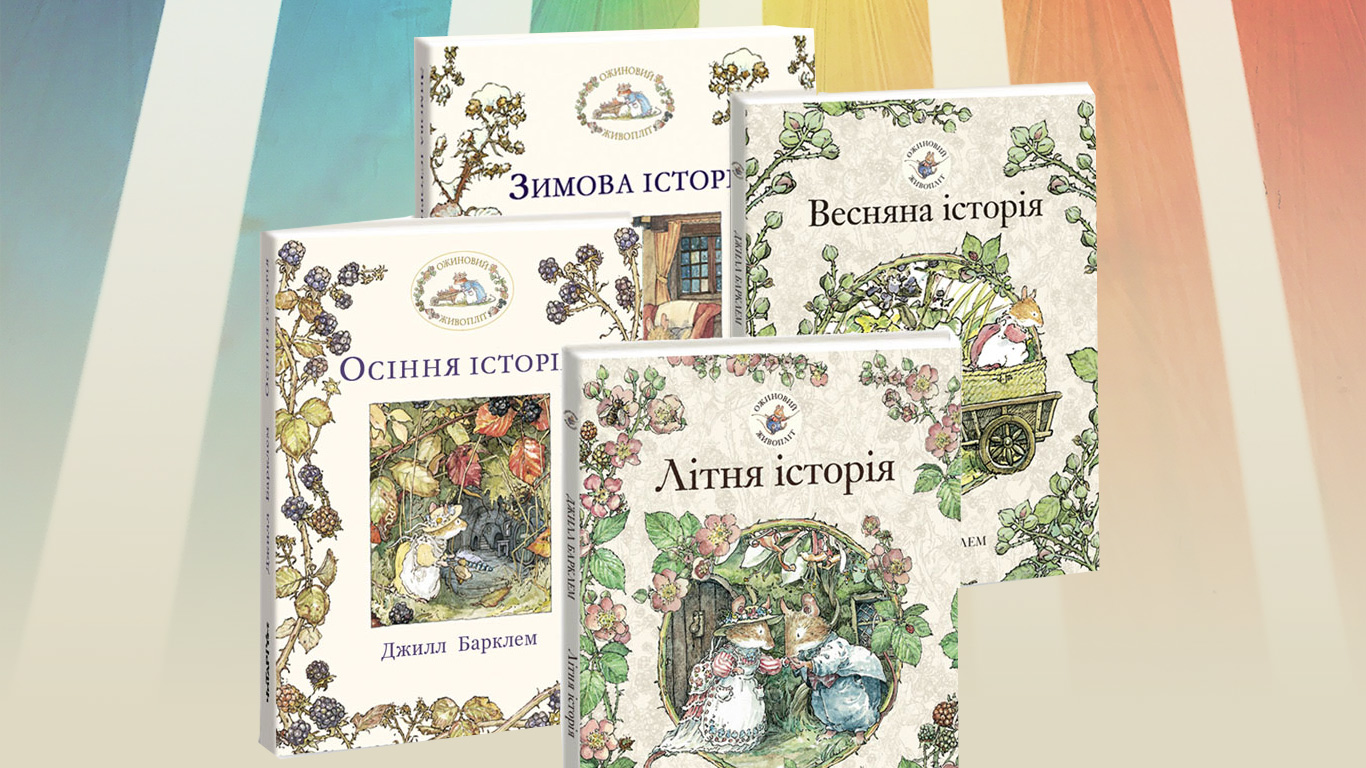
“Blackberry Hedge” series by Jill Barklem (Ukrainian book covers)
Translation: Ilona Babkina
Copy editing: Nicole Yurcaba, Terra Friedman King
This publication is sponsored by the Chytomo’s Patreon community



